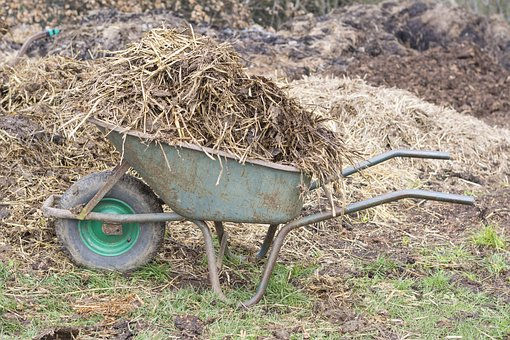
There are many ways to grow food or flowers, and it doesn't always have to be back-breaking work. "No dig" gardening is a great method of gardening that has gained popularity in recent years as people look for more sustainable and natural ways to grow their own food. It involves the use of organic matter to create a rich soil environment that allows plants to thrive without the need for traditional digging and tilling.
Traditionally, gardening can involve digging up the soil to prepare it for planting. This process would disturb the soil structure and the natural ecosystem of the garden, including the beneficial microorganisms that live in the soil. "No dig" gardening aims to minimize this disturbance and maintain the natural balance of the soil, because, you guessed it - NO DIGGING! One of my favorite gardening books Gardening Without the Work by Ruth Stout, goes into much greater detail on this subject.

Getting started
To create a no dig garden, start by selecting a location that receives good sunlight and good drainage. Most people start with putting down a layer of cardboard (make sure all that tape is off your Amazon boxes first!) or newspaper (no shiny pages) over the new garden area. However, I have started with just hay or straw first and found success. Tip: Make sure your hay or straw has not been sprayed with chemicals! Straw will most likey be a safer option. These layers will suppress any weeds or grass that may be present and will eventually break down, feed the microbes, and become part of the soil.
Build a soil lasagna
Next, add a layer of organic matter on top of the cardboard or newspaper. This can be a mixture of compost, aged manure (make sure the animals didn't eat chemically sprayed hay), or any other type of organic material that will break down over time and enrich the soil. The organic matter will attract beneficial microorganisms that help to aerate and fertilize the soil.
Once you have added the organic matter, you can begin planting your garden. Oh finally! Hey, it may be the "no-dig" way but it's not the "no-work" way - everything requires effort. Next, simply make a hole in the soil and add your seed or plant, making sure to water it thoroughly, and follow the directions for what you are planting. Over time, the organic matter will break down and create a rich soil environment that will provide your plants with the nutrients they need to thrive.
Eco- Friendly Sustainability!
One of the main benefits of No-Dig gardening is that it requires much less effort than traditional gardening methods. There is no need to spend hours digging up the soil or maintaining a complicated irrigation system. Additionally, with good mulching practices, a No-Dig garden can help to conserve water and reduce soil erosion, making it a more sustainable option for growing your own food.

Another benefit is that it can help to reduce the amount of carbon emissions produced by traditional gardening methods. Digging up soil releases carbon dioxide into the atmosphere - carbon needs to stay in the ground! By minimizing the amount of digging required, no dig gardening can help to reduce these emissions and promote a more sustainable future.
This style of gardening is a natural and sustainable way to grow your own food that is gaining popularity around the world. By creating a rich soil environment using organic matter, you can promote the growth of healthy plants without the need for traditional digging and tilling. So if you're looking for a more eco-friendly and low-maintenance way to garden, give "no dig" gardening a try! Let me know your thoughts and if you have tried this method in your own garden space.

Comments